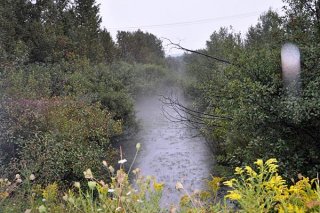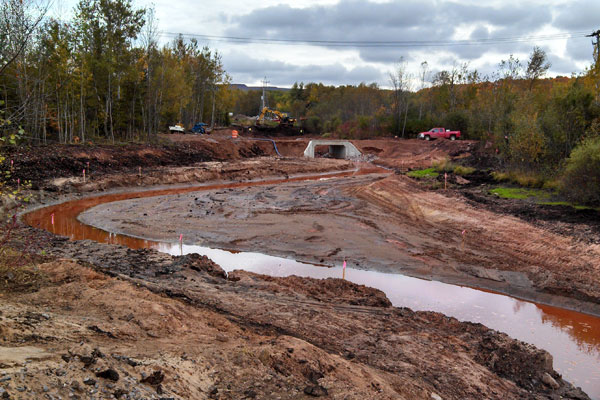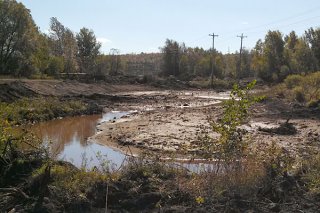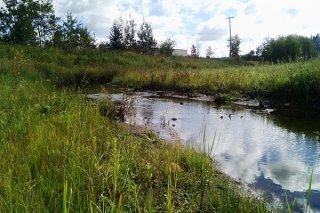Partridge Creek Diversion Project
The Partridge Creek diversion project began in 2011 in an effort to eliminate a major source of mercury entering Deer Lake. It supported removal of the fish consumption beneficial use impairment through reductions in mercury loading to Deer Lake.
- created improved brook trout habitat
- created green infrastructure
- developed the local economy
- decreased risks to human health
Beginning in 2010, EPA awarded the City of Ishpeming a total of $8 million from the Great Lakes Restoration Initiative to complete the project. The City of Ishpeming also contributed $700,000 to the project.
View larger map in a new window
Before the diversion project, Partridge Creek flowed into the New York pit mine east of the City of Ishpeming. Clean freshwater entered the mine pit, but became contaminated with mercury as it flowed through the mine workings under the city. The water was discharged on the west side of the city from Partridge Creek into Carp Creek, and then into Deer Lake, where it raised mercury concentrations.
The goal of the project was to prevent mercury from entering Deer Lake by diverting Partridge Creek through historic streambeds and closed culverts, located above the mines where contamination occurs.
All phases of the project were complete by November 2013.
Phase One
The first phase of the project was completed in October 2012. This upstream portion of the project created 0.5 miles of closed culvert and 0.2 miles of open stream.

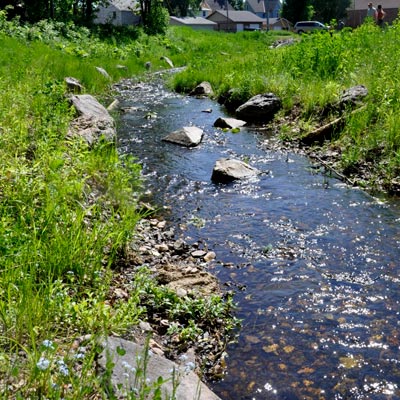
Phase Two
The second phase of the Partridge Creek Diversion project began in summer 2013 and involved constructing the downstream portion of the creek diversion project. The diversion structure was finished in November 2013. This part of the project constructed 0.5 miles of closed culvert and 0.7 miles of open stream. It also constructed 1.3 acres of new wetlands in the new creek’s floodplain. Phase 2 was funded by a $6 million GLRI grant to the City of Ishpeming.
When the Partridge Creek project was designed, a key objective was to restore its naturally meandering stream channel. One of the critical target species for that habitat was brook trout. Accordingly, the new stream is designed with pools, riffles, meanders and submerged structures. The result is over 0.5 miles of prime brook trout habitat.

